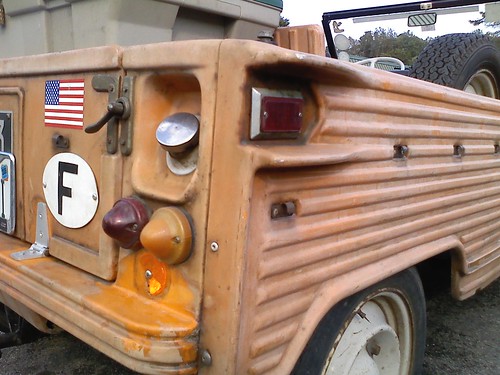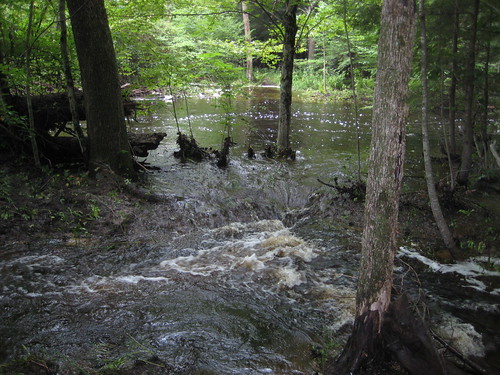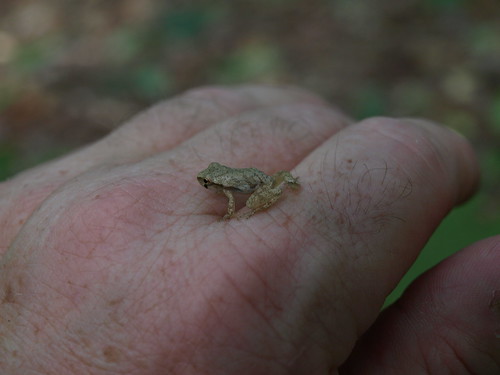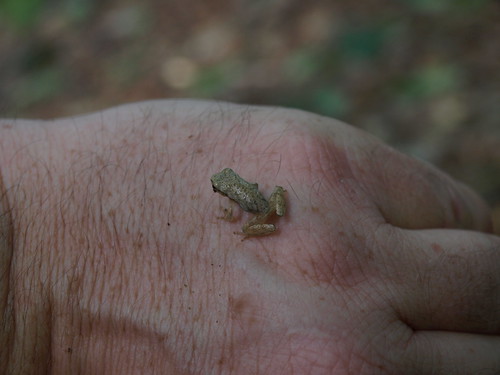I told Matt M. ages ago that I’d post some thoughts on steampunk – here goes nothin’.
First, a little scope narrowing/definition – the steampunk I’m talking about is the steampunk of things – the design sensibility that takes inspiration both from Verne et al. and from the second generation of steampunk lit. It’s too bad Gaslight Romance didn’t take as an appellation for gen 2; it’s more accurate, but -punk seems to be to speculative fiction genres what -gate is to political scandals. So, across the board, punk it shall be, though the first generation – Gibson, Sterling and friends – was the true punk: a critique rather than a celebration. Steampunk things, especially now that the subject is getting some mainstream attention, can be all over the place. If pressed, I’d offer up a top hat and goggles as the essential pieces of clothing and when it comes to other ‘stuff’, I’m going to point to Jake Von Slatt’s keyboard and Morse code RSS reader as sitting firmly at the center of the Steampunk universe.
Steampunk is the child of maker culture. I’ve posted about makers before – the steampunk practice of modding, hacking and fabricating is of a piece with what many others are doing to make commodity items uniquely their own. Steammakers are well positioned: many of their favorite materials – brass, wood, leather – are relatively easy to work and they are echoing/emulating a period when the inventor in his workshop was paradigmatic (they don’t call ’em Edisonades for nothing). If you want to tinker, taking as your model a period when the tinkerer was king ain’t a bad idea. Doing it in a time when sharing ideas and information with like minded people is incredibly easy? Another good idea.
If maker kulturny is how, retrofuturism is why. Retrofuturism (or postmodern paleo-futurism, if you prefer) addresses a fundamental question: “Where’s my friggin’ flying car?” More seriously, it’s an attempt to look at past visions of the future to see what we can learn about the times the predictions were made in and figure out something about how the world works (why were the predictions so wide of the mark). For many of us, retrofuturism and disappointment go hand in hand – I was brought up on Mercury, Gemini and Apollo, saw 2001: A Space Odyssey on my tenth birthday and bought into the Star Trek “Little UN on the Bridge” vision of science and Vulcan rationality overwhelming all our petty differences (yeah, I know Kirk was white, male and a bit of a hound, but you have to start somewhere). Where are we now? It’s been 35 years since Apollo 17 left the moon – we’re dinking around in low earth orbit, going noplace fast. Further, if you take a hard look at the distances and energy budgets involved in interstellar travel you’re left with a choice between non-starter and Clarke’s 3rd law. Yes, the future will involve magic tech, but relying on the Underpants Gnomes (collect underpants, ?, a starship!) isn’t where I’ll be putting my money. The ultra-modern future predicted in the sixties is nowhere to be found and the road to Infinity and Beyond has a Darien Gap the size of the Pacific in it. Instead, what we have looks disturbingly like plain old day-to-day life.
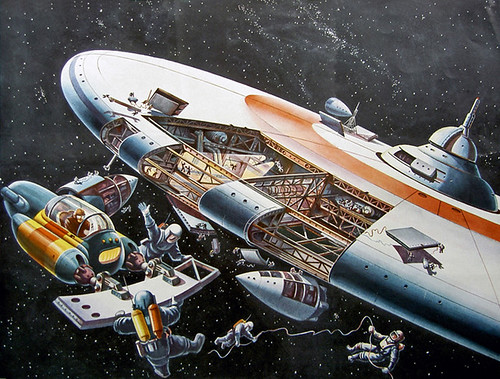
*
I’m going to skate past the fact that the world has changed – maybe even progressed – quite a bit since ’68 and ignore the incredible stuff our metal and silicon kids are doing around the solar system. Part of it is that we tend to adapt to change when we’re in the middle of it. Cell phones? Yeah, yeah, sure, sure. GPS receivers in damn near everything? Yawn. Another piece – and the root of retrofuturist disappointment IMHO – is the tendency of sci-fi types and futurists to concentrate on extremes – Mad Max or Futurama II. Utopia or dystopia; is there a word for a -topia where baldness is an issue, where kids get frustrated with their parents, where one waits in long lines to renew a drivers license? The biggest single tech change of the last quarter century – data networking/the Internet – is used to connect people to each other and to information with unprecedented ease. It’s also used for v1agr@ spam, 419s and zombies. The problem with the future is that there are people in it – a fact that I think we’re realizing.
I know I’m veering a bit, but I need to acknowledge the ultimate superscience sendup – The Venture Bros.
The series’ predominant homage is to Jonny Quest, as it is the basis for many of the main characters. Dr. Venture is loosely modeled on Benton Quest, Brock likewise on Race Bannon, and the Venture boys correspond to Jonny and Hadji. The comparisons, however, are taken to the level of an extreme parody by making the characters the “next generation” after an age of scientific heroism – and the next generation doesn’t always fare well.
Thus Dr. Venture is a pill-popping, barely-competent scientist who treats his children and those around him with overt disdain and contempt; Brock is a hyper-macho man with a (frequently used) license to kill; and the boys are nincompoops stuck in an out-of-date mindset. One newspaper critic remarked, “if filmmakers Woody Allen and Sam Peckinpah had collaborated on Jonny Quest, it would have come out a lot like this.” *
We have seen the future and it looks like a cross between the alley behind a liquor store and a Massachusetts DMV office (with costumed supervillians!). (Also – proof blogging makes you smarter – I knew I’d seen the Venture Industries building somewhere before – now I know where.)

*
So… recent superscience boosterism is bunk. Maybe Verne and company got it right. If not, at least their miscues aren’t within living memory (too cheap to meter, anyone?). Steampunk goes back farther for it’s optimistic vision of the future for practical (brass), thematic (Tesla) and temporal (old enough to be malleable) reasons, but it does – in spite of it’s frequent darkness – have it’s own customized, idiosyncratic view of a possible good life.
Finally, Matt asked whether Steampunk might be the new counterculture. I responded in comments, but I want to elaborate slightly. The 60s/early 70s counterculture – as a label applied by the mainstream – merely identified a large group of people who were not pleased with the way things were going and/or thought they had a better way. Within this population there were a million different tribes and tendencies; one could develop a taxonomy of different kinds of acidheads, let alone try to figure out what tied together SDS, jesus freaks and Merry Pranksters. I think we’re seeing similar kinds of things happening today – makers overlap Steampunks overlap (yes, clothing counts) goth and on and on – with one important exception. The center – mainstream culture – is less dominant and more easily fragmented than it was 40 years ago. It’s CBS/NBC/ABC (then) vs. The Golf Channel/Discovery/Versus/etc., etc. (now) to use an obvious example. Personally, I think this is a good thing – diversity (and tolerance) in cultural systems builds in some resilience – if you’re going to fall victim to groupthink – and you will – smaller, more amorphous groups sound good to me.
I’d like to do my part in the mash-up/creativity/fragmentation movement – allow me to point to a series of posts on Lord Whimsy’s LiveJournal. For those of us who would rather be in the woods than in the workshop – neoleatherstockingism (I gotta clean up that name). Where steampunks have brass goggles, we’ll have silver gorgets (also gunstock clubs, dogs, hawks, optics, net access)! Manifesto to follow – I’m 75% serious about this.



